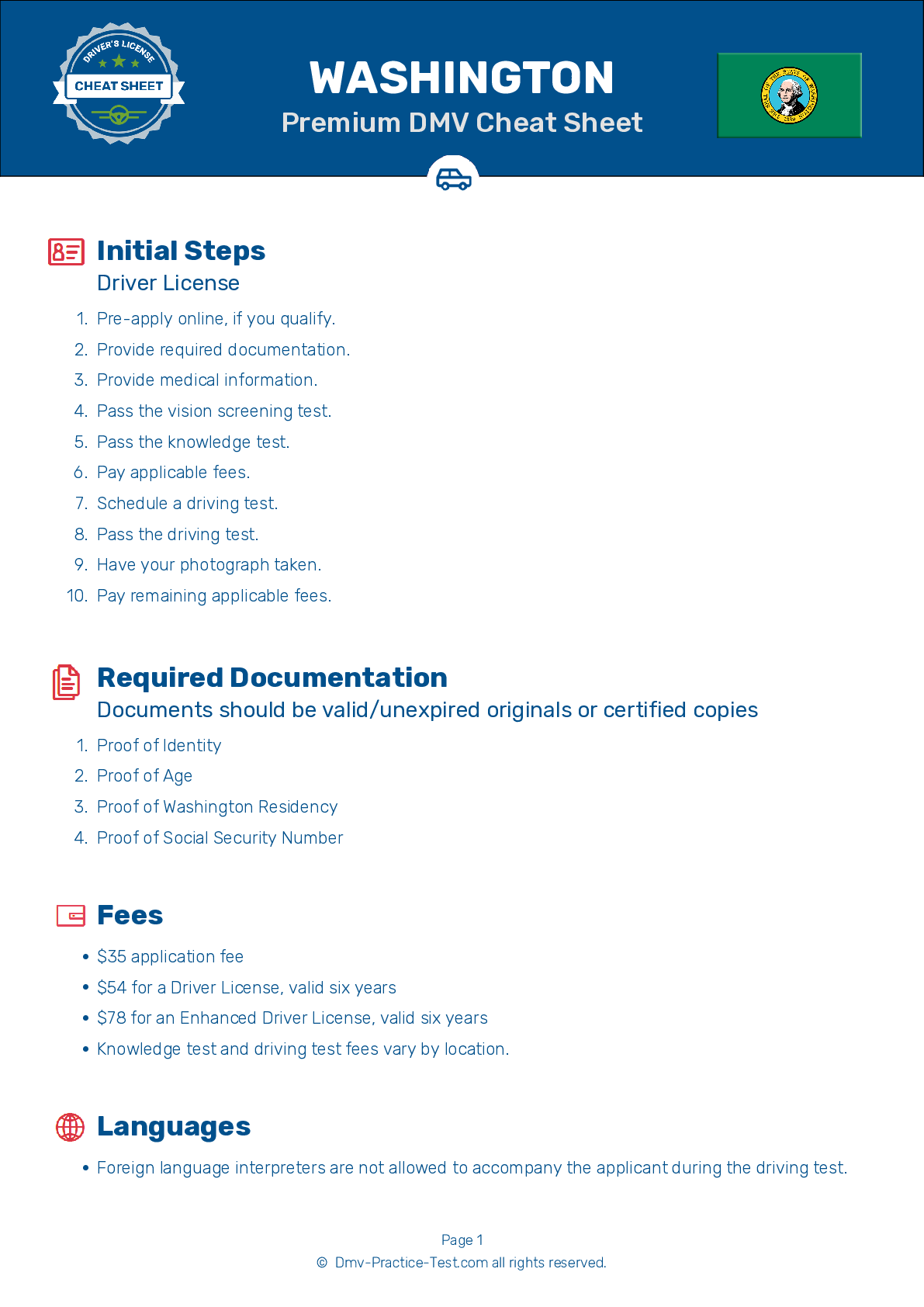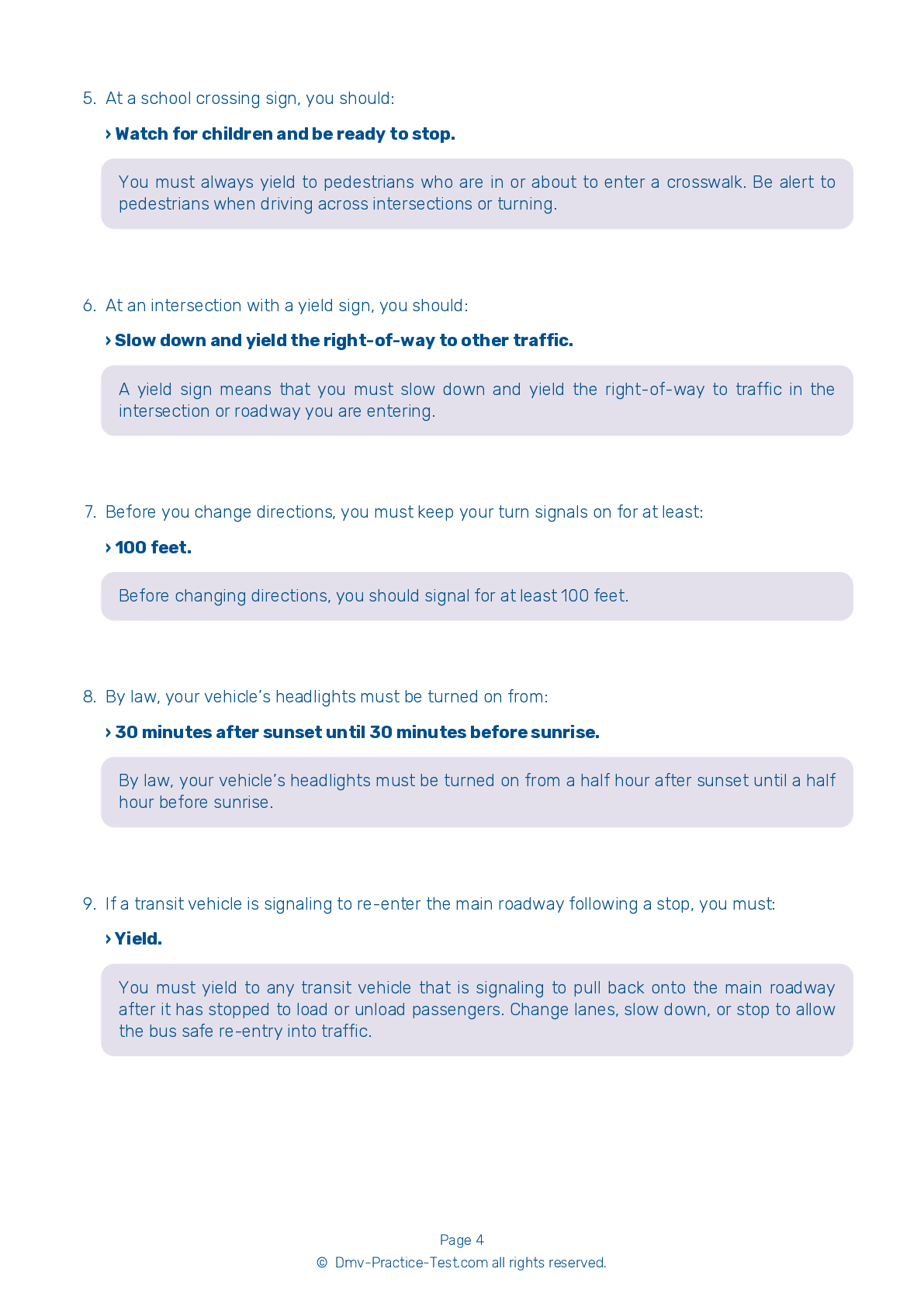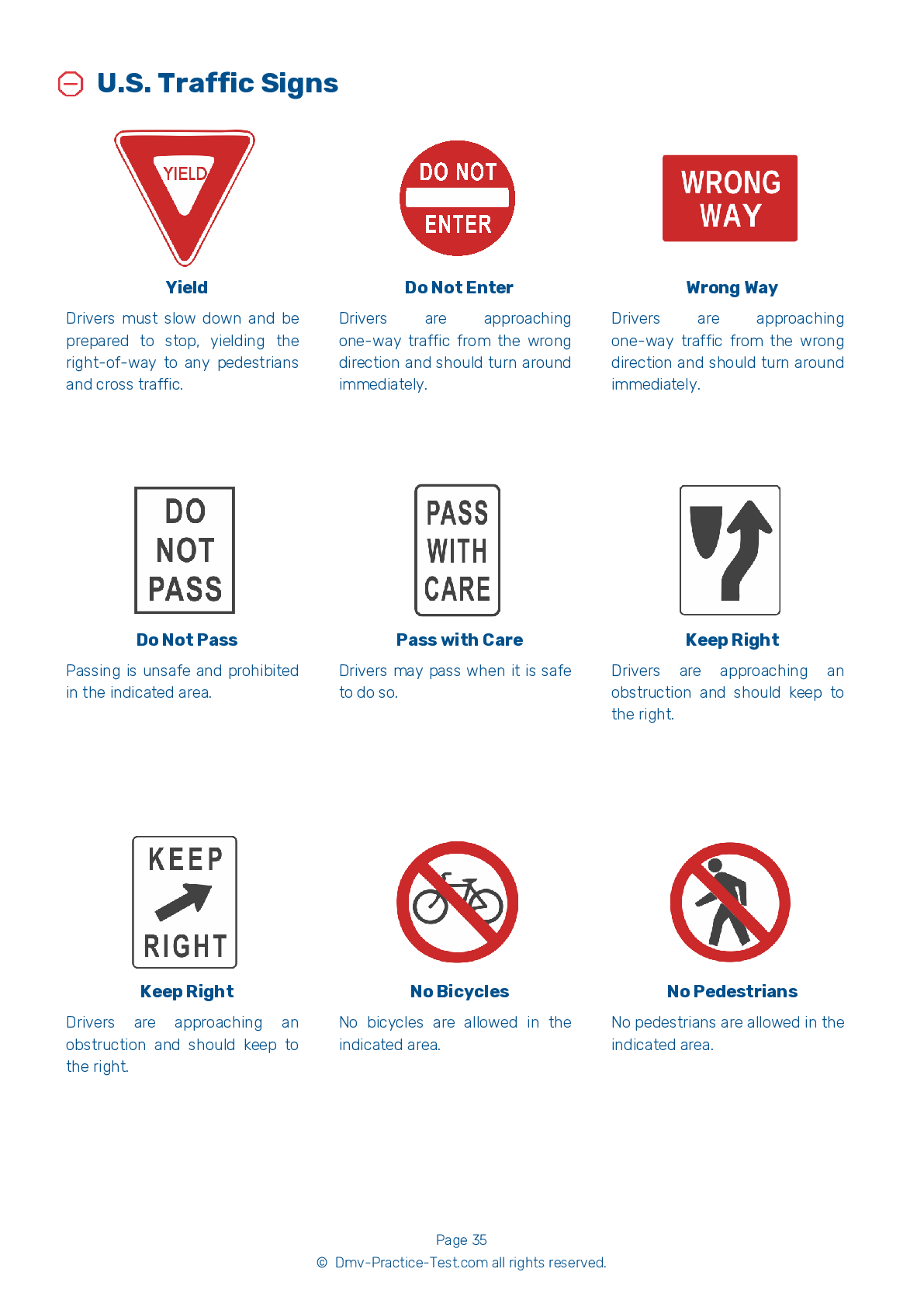FREE Washington DMV Practice Test #16 Page 4 of 4
The Washington DMV practise examinations have been updated for January 2025. It includes questions based on the Washington Driver Handbook's most significant traffic signals and legislation for 2025. Use actual questions that are very similar (often identical!) to the DMV driving permit test and driver's licence exam to study for the DMV driving permit test and driver's licence exam.
On the practise exam, each question gets a tip and explanation to help you remember the concepts. The written component of the official Washington DMV test will feature questions about traffic rules, traffic signs, and driving statutes, as well as knowledge from the Driver Handbook.
To obtain a passing grade, you must correctly answer 20 of the 25 questions. Use the practise exam provided by the Washington Department of Motor Vehicles to help you prepare for your instruction permit or driver's licence.
The DMV exam is available in several languages.
Using any kind of testing assistance will result in an automatic fail, and the DMV may take additional action against your driver's licence, so stay away from it.
19 . At an intersection with a yield sign, you should:
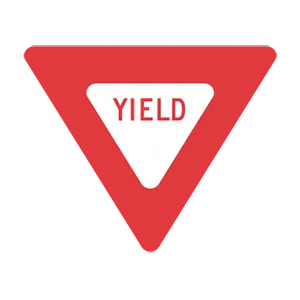
A yield sign means that you must slow down and yield the right-of-way to traffic in the intersection or roadway you are entering.
20 . This sign means:
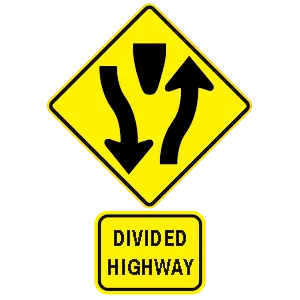
Warning signs are usually diamond-shaped with black markings on a yellow background. They alert drivers to upcoming hazards. This warning sign indicates that drivers are about to encounter a divided highway.
21 . You may drive around or under a gate that is being lowered or raised at a railroad crossing:
Flashing red lights, lowered crossing gates, and/or bells at a railroad crossing mean that you must come to a complete stop. You must not go across the tracks until the lights and bells have stopped and the crossing gates are completely up. Do not drive around or under a gate that is moving up or down.
22 . This sign means:

This sign indicates the presence of a pedestrian crossing. Drivers should be cautious when driving where pedestrians may be present.
23 . You want to turn left at an intersection. The light is green but oncoming traffic is heavy. You should:
When making a left turn where there is approaching traffic, you must wait for the approaching traffic to go through before you turn. You may enter the intersection to prepare for your left turn if the light is green and no other vehicle ahead of you plans to make a left turn.
24 . If two vehicles arrive to an uncontrolled intersection at the same time:
If two vehicles arrive at the same time to an uncontrolled intersection, the driver on the left must yield to the driver on the right. The driver on the left may then proceed when it is safe to do so.
25 . When approaching a traffic signal displaying a steady green arrow, drivers:
A green arrow displayed on a traffic signal tells drivers that they may turn in the direction of the arrow. You must be in the proper lane for such a turn. Yield the right-of-way to vehicles and pedestrians already in the intersection.
2025 Washington | Frequently Asked Questions
1. Complete a driver education course if you're under 15 ½.
2. Visit a driver licensing office.
3. Provide proof of identity, Social Security number, and residence.
4. Pass the knowledge test.
5. Pay the required fee.
6. If you're under 18, a parent or guardian must sign the application.
Remember, with a permit, you must always have an adult 21 years or older in the car with you.
1. Not checking mirrors and blind spots.
2. Incorrect signaling or forgetting to signal.
3. Lack of steering control.
4. Improper lane positioning and changing.
5. Not following traffic signs or signals.
6. Inadequate observation at intersections.
7. Speeding or driving too slowly.
8. Failing to yield the right of way where necessary.
Remember, practice is key to overcoming these errors.
